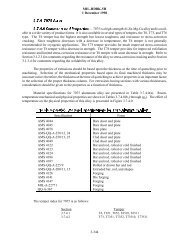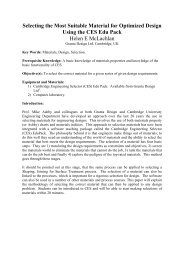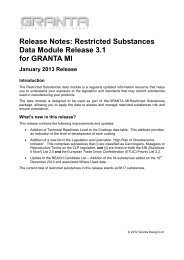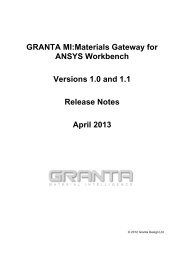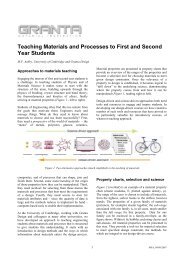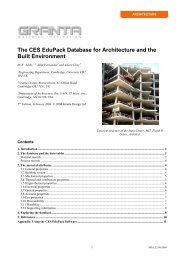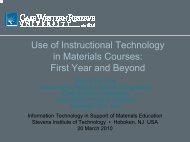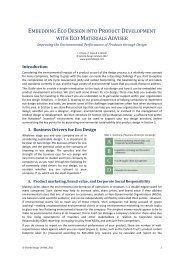Eco Audit White Paper. - Granta Design
Eco Audit White Paper. - Granta Design
Eco Audit White Paper. - Granta Design
Create successful ePaper yourself
Turn your PDF publications into a flip-book with our unique Google optimized e-Paper software.
1. IntroductionAll human activity has some impact on theenvironment in which we live. Theenvironment has some capacity to cope withthis, so that a certain level of impact can beabsorbed without lasting damage. But it isclear that current human activities exceed thisthreshold with increasing frequency,diminishing quality of life and threatening thewell being of future generations. Part, at least,of this impact derives from the manufacture,use, and disposal of products, and products,without exception, are made from materials.Materials consumption in the United Statesnow exceeds 10 tonnes per person per year.The average level of global consumption isabout 8 times smaller than this but is growingtwice as fast. The materials and the energyneeded to make and shape them are drawnfrom natural resources: ore bodies, mineraldeposits, fossil hydrocarbons. The earth’sresources are not infinite, but until recently,they have seemed so: the demands made onthem by manufacture throughout the 18 th , 19 th ,and early 20 th century appeared infinitesimal,the rate of new discoveries always outpacingthe rate of consumption. This perception hasnow changed: warning flags are flying, dangersignals flashing.To develop tools to analyze the problem andrespond to it, we must first examine thematerials life cycle and consider how to applylife cycle analysis. The materials life cycle issketched in Figure 1. Ore and feedstock aremined and processed to yield materials.These are manufactured into products that areused and at the end of life, discarded,recycled or (less commonly) refurbished andreused. Energy and materials are consumedin each phase of life, generating waste heatand solid, liquid, and gaseous emissions.2. Life cycle analysis and its difficultiesThe environmental impact caused by aproduct is assessed by environmental lifecycle assessment (LCA).Life cycle assessment techniques, nowdocumented in standards (ISO 14040, 1997,1998), analyze the eco impact of productsonce they are in service. They have acquireda degree of rigor, and now deliver essentialdata documenting the way materials influencethe flows of energy and emissions of Figure 1.It is standard practice to process these data toassess their contributions to a number ofknown environmental impacts: ozonedepletion, global warming, acidification of soiland water, human toxicity, and more (ninecategories in all), giving output that looks likeFigure 1. The material life-cycle: material creation, product manufacture, product use, and a number of options forproduct disposal at end of life. Transport is involved between the stages.The CES EduPack <strong>Eco</strong> <strong>Audit</strong> Tool 1 © 2012, <strong>Granta</strong> <strong>Design</strong>



